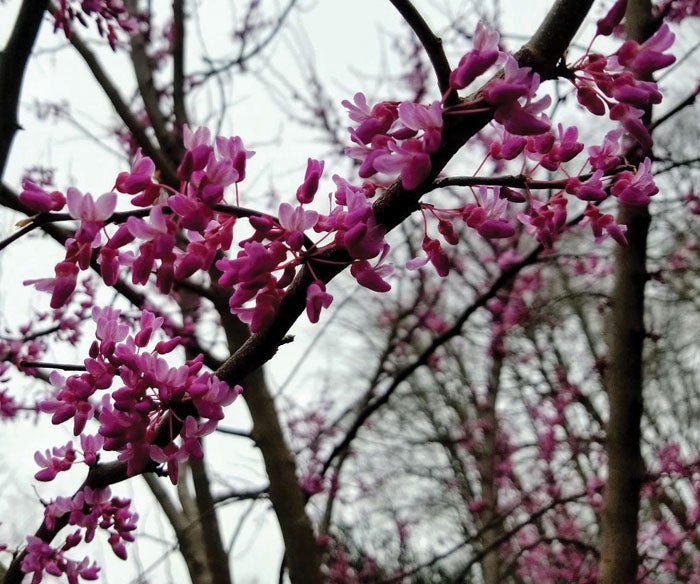Blackwelder column: Be warned, it’s not too late for a frost
Published 12:00 am Friday, March 30, 2018

- Submitted photo A redbud in bloom.
The weather was less than perfect earlier this week, but it’s looking much better going into next week. There’s still plenty to do outside, but beware, April 15 is the accepted last frost-free date.
Early plantings of annuals and perennials, including vegetable transplants, often fall victim to late frosts. Below are a few gardening questions I’ve received earlier this week that may be of interest.
Question: Is it too late to mow my liriope?
Answer: No, liriope is in the lily family and a tough plant. Cold weather is just about over and will not do any significant damage to newly mowed sprouts. Make sure your mower blade is sharp and raise the height of the mower to four inches or higher.
Question: We have some bearded irises that have spread and I think they need to be moved to another location. When is the best time of year to relocate them?
Answer: Actually, the best time to plant bearded iris is late summer, however, you can move them now. In a well-prepared bed, dig a shallow hole large enough to accommodate the rhizome or clump of rhizomes. Form a mound of soil in the center for the planting base. Make the mound high enough so the top of the rhizome is slightly above soil level. Spread the roots around the mound, fill with soil, and water them thoroughly. Irises are tough and usually have a high success rate when transplanted.
Question: I believe my redbud tree is declining. Sections of the tree looks dead. Do these trees have a major disease problem?
Answer: Native redbuds are not what I would consider a long-lived shade tree as compared to oaks and maples. However, one of the more positive aspects of the tree is they generally are easy to grow, being a legume, and have very few pest problems. If the tree is declining it will not recover. There are new redbud cultivars featuring ample assortments of colors and leaf textures that adapt well to our climate.
Question: I received a couple of beautiful Easter lilies from my church which I want to keep in flower as long as possible. What should I do to make them last?
Answer: Try to locate the lilies in a room that is cool, around 68 degrees. Make sure they are in an area with low indirect sunlight. Remove all the anthers from the blooms. The anthers are the fuzzy yellow part in the center of the bloom. Remove fading blooms as quickly as possible. Provide them with regular water, but not too much. Easter lilies can be planted outdoors later this spring when the blooms have faded away and after late frosts have occurred.
Horticulturist Darrell Blackwelder is retired director of the N.C. Cooperative Extension Service in Rowan County.




